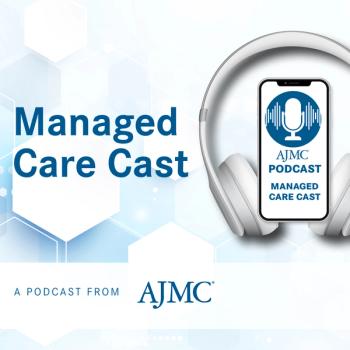
Knowledge of Health Insurance, Financial Literacy Fail to Prevent Financial Hardship Among Patients With Cancer
A team of investigators from across the United States investigated a potential connection between patients’ health insurance literacy and their reported financial hardship.
Financial hardship among patients with
These cross-sectional study outcomes were investigated among 404 patients enrolled from Mayo Clinic in Phoenix, Arizona (n = 299), from December 2019 to February 2020 and August to October 2020, and University of Mississippi Medical Center (UMMC) in Jackson (n = 105) from September 2020 to February 2021. Fifty-four percent were women, 75% were non-Hispanic White, and the median (IQR) patient age was 63 (54-71) years.
Participants’ financial hardship was evaluated via COST-FACIT (Comprehensive Score for Financial Toxicity–Functional Assessment of Chronic Illness Therapy) and specific domains of that hardship (material, psychological, and behavioral) via National Health Interview Survey (NHIS) questions; the electronic health records from each site provided age, sex, insurance type, and disease data, and sociodemographics were gathered via study surveys. The Health Insurance Literacy Measure (HILM) gauged “a consumer’s ability to select and use health insurance,” and 5 questions from the National Financial Capability Study evaluated financial literacy.
Overall, 38% of their study enrollees had private insurance and 72% had solid tumors, 42% being metastatic disease.
Close to half (49%; 95% CI, 44%-53%) of the study population reported financial hardship, and this result jumped almost 20 percentage points, to 68% (95% CI, 63-72%), when findings from the NHIS questions revealed participants had at least 1 hardship domain. This was seen despite 66% (95% CI, 60%-69%) also self-reporting they had a high level of financial literacy.
The mean (SD) overall health insurance literacy score via HILM was 64.9 (13.3), and according to the study investigators, each 10-point increase equated to an 18% lower risk of financial hardship (odds ratio [OR], 0.82; 95% CI, 0.68-0.99; P = .04). However, this result was negated when financial literacy was considered. A HILM score below 60 indicated low health insurance literacy and was associated with overall financial hardship, as well as material and behavioral hardship.
Fifteen percent of all respondents reported low levels of both health insurance literacy and financial literacy; 50%, high levels of both; 14%, high financial literacy and low insurance literacy; and 21%, high health insurance literacy and low financial literacy.
“Patient-reported financial hardship is an increasing challenge in cancer care delivery,” the study authors emphasized. “Health insurance literacy and its association with financial hardship in patients with cancer, especially after controlling for financial literacy, have not been well examined.”
With a lower COST-FACIT score indicating greater financial hardship, 49% of the study cohort had a median score of 27—the indicator of any financial hardship. In addition, material, psychological, and behavioral hardship were reported by 28%, 64%, and 13%, respectively.
Regarding financial knowledge, the median (IQR) score was 5 (4-6) points, and 66% of respondents provided correct answers to at least 4 financial literacy questions, which the study authors says indicates they had high financial literacy. Lower odds of financial literacy correlated with being a UMMC patient (OR, 3.04; 95% CI, 1.67-5.55), having a monthly household income below $5000 (OR, 2.00; 95% CI, 1.17-3.44), classifying as “other race or ethnicity” (OR, 2.10; 95% CI, 1.13-3.90), and having less than a college degree (OR, 3.44; 95% CI, 2.03-5.91). Further, there was a 26-percentage-point difference in incidence of low financial literacy reported between those who did and did not report financial hardship: 49% vs 23%.
“Financial hardship from treatment is an enormous issue for patients with cancer that has been associated with treatment nonadherence and higher bankruptcy risk,” the authors wrote. “Efforts by health plans, hospitals, and the federal government to improve health insurance literacy can ensure that patients make financially sound choices among different insurance products based on their financial condition and medical requirements, use their benefits optimally, and continue their affordable coverage for recommended cancer care.”
An
Reference
Khera N, Zhang N, Hilal T, et al. Association of health insurance literacy with financial hardship in patients with cancer. JAMA Netw Open. Published online July 25, 2022. doi:10.1001/jamanetworkopen.2022.23141
Newsletter
Stay ahead of policy, cost, and value—subscribe to AJMC for expert insights at the intersection of clinical care and health economics.















































